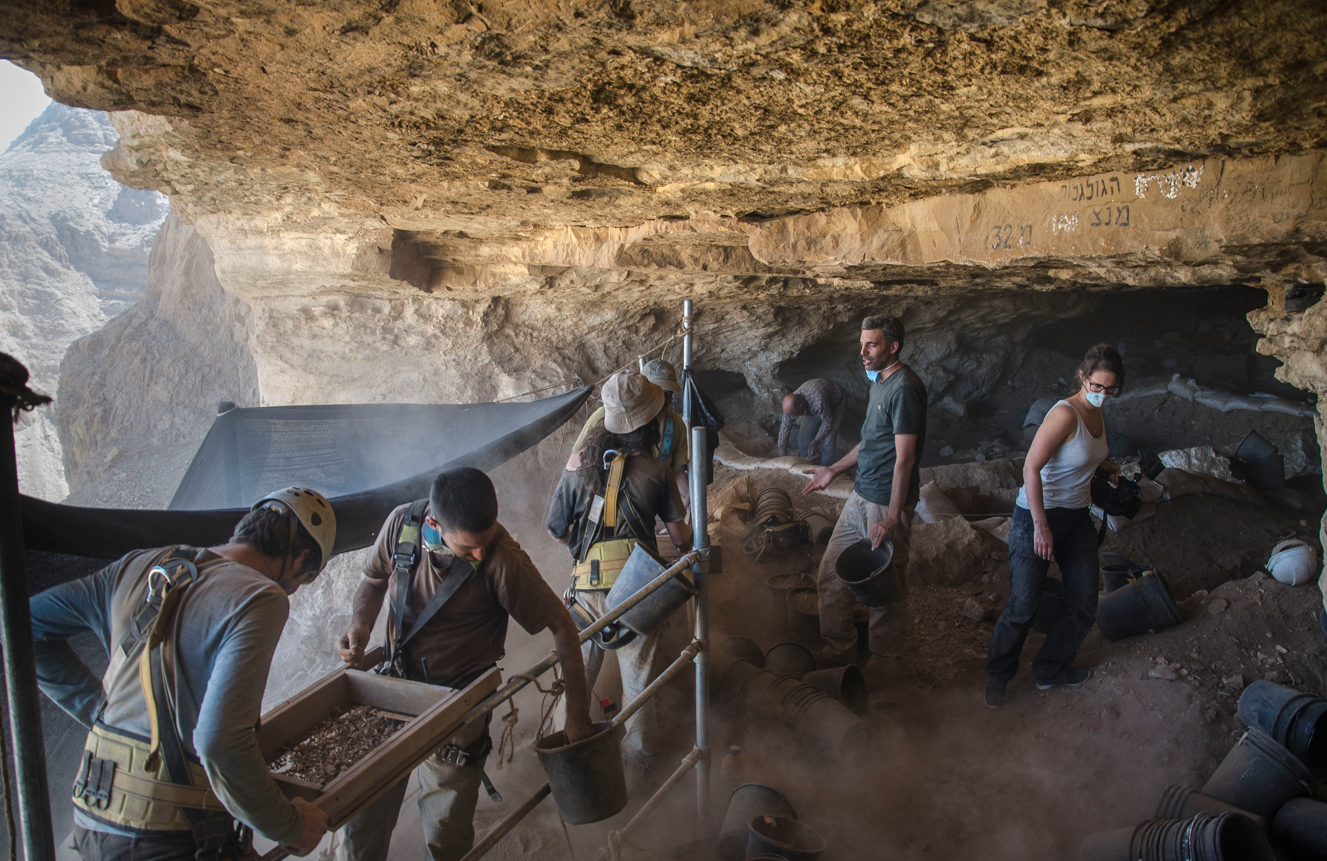A strip of scarlet-red cloth that was discovered in Israel’s Cave of Skulls has been dated to over 3,800 years old, marking the earliest archaeological evidence of a dyed textile using crushed bugs. Despite being crafted in the Bronze Age, the color of the extremely rare pigment is still full of life – and mystery.
The tiny scrap of material is smaller than a postage stamp. Despite its slight size, the relic caught the eyes of archeologists because of its vibrant red color.
Alongside purple and royal blue, red is considered one of the ancient world’s most precious and expensive dyes, strictly reserved for religious elites and extra-fancy cultic contexts. The crimson pigment is coveted because it’s obtained through a painstaking process involving Kermes, an insect that the Bible refers to as the “scarlet worm.”
“In ancient times, the dye was produced from the female scale insect, which lives on the kermes oak tree (Quercus coccifera),” Dr Naʼama Sukenik, Curator of the Organic Material Collection at the Israel Antiquities Authority, said in a statement sent to IFLScience.
“Collecting these kermes was done in a very short window of time – one month out of the year, in the summer, after the female laid her eggs but before they hatched— when the amount of dye was greatest. The short period in which the kermes could be collected, the difficulty in finding them due to their small size (between 3–8 mm [0.1 to 0.3 inches]), and their camouflage colors, that make it difficult to locate them, as well as the small amount of dye that can be produced from them — and on the other hand, the beautiful red hue (scarlet) that can be produced from them for dyeing textiles, made their use highly prestigious,” said Dr Sukenik.

Excavation in the Cave of Skulls, where the piece of fabric was discovered.
Image credit: Yuli Schwartz / Israel Antiquities Authority
First discovered in 2016, the piece of textile has recently been reanalyzed using carbon-14 analysis by researchers at the Israel Antiquities Authority, concluding it was made in the Middle Bronze Age (1767-1954 BCE).
Chemical analysis also affirmed the pigment was derived from the acid of the so-called scarlet worm. Most remarkably, the researchers were even able to determine it came from a specific species (Kermes vermilio) that lives on a tree that is not native to the area.
“Although it was discovered that Israel has a native species of scale insect living on Palestinian oak (Quercus calliprinos), capable of producing a red-orange color, the analytical results indicate that in the case at hand, the species of scale insects is Kermes vermilio which lives on the kermes oak tree (Quercus coccifera). This tree species is common in the central and eastern Mediterranean region, including Spain, France, and other areas, but is not found in the Land of Israel,” said Professor David Iluz from Bar-Ilan University, who also heads the Environmental Sciences and Agriculture Department at Beit Berl College.
It’s unclear how the pigment ended up in the Cave of Skulls in the Judean Desert, far away from where the Kermes vermilio lives. Nevertheless, it is safe to assume that its distant provenience made the textile all the more valuable for the lucky souls who possessed it.
“The rare textile is a testament to broad international commercial networks functioning already at this time and indicates the presence of an elite society,” added Dr Sukenik.
The study was published in the Journal of Archaeological Science: Reports.
Source Link: 3,800-Year-Old Red Cloth Found In Cave Of Skulls Came From Far, Far Away